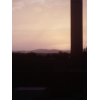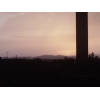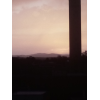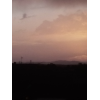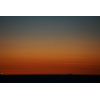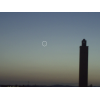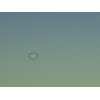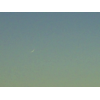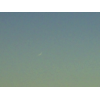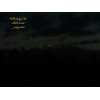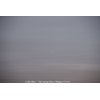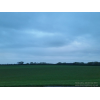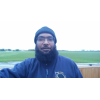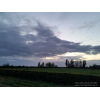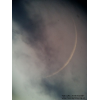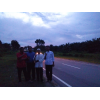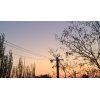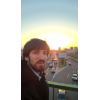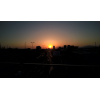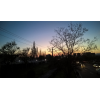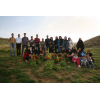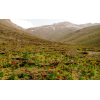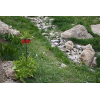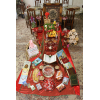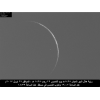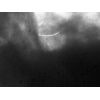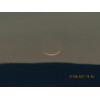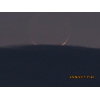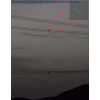نتائج رصد هلال شعبان لعام 1438 هـ
- توقع رؤية هلال أول الشهر (شعبان)
- نتائج تحري هلال أول الشهر (شعبان)
- بداية الشهر الرسمية
- توقع رؤية هلال آخر الشهر (رجب)
- نتائج تحري هلال آخر الشهر (رجب)
توقع رؤية هلال أول الشهر (شعبان)
سيحدث الاقتران المركزي (المحاق المركزي) يوم الأربعاء 26 إبريل/نيسان 2017 الساعة 12:16 بالتوقيت العالمي بمشيئة الله.
إمكانية رؤية الهلال يوم الأربعاء 26 إبريل/نيسان 2017 ويوم الخميس 27 إبريل/نيسان 2017 موضحة في الأشكال التالية باستخدام برنامج المواقيت الدقيقة باعتماد معيار عودة، بحيث:-
- رؤية الهلال مستحيلة من المناطق الواقعة في اللون الأحمر بسبب غروب القمر قبل غروب الشمس أو/و بسبب حصول الاقتران السطحي بعد غروب الشمس.
- رؤية الهلال ممكنة باستخدام التلسكوب فقط من المناطق الواقعة في اللون الأزرق.
- رؤية الهلال ممكنة باستخدام التلسكوب من المناطق الواقعة في اللون الزهري، ومن الممكن رؤية الهلال بالعين المجردة في حالة صفاء الغلاف الجوي التام والرصد من قبل راصد متمرس.
- رؤية الهلال ممكنة بالعين المجردة من المناطق الواقعة في اللون الأخضر.
- رؤية الهلال غير ممكنة بالعين المجردة أو بالتلسكوب من المناطق غير الملونة، على الرغم من غروب القمر بعد غروب الشمس ومن حصول الاقتران السطحي قبل غروب الشمس، وذلك بسبب قلة إضاءة الهلال و/أو بسبب قربه من الأفق.
- يرجى ملاحظة أن الأشكال أدناه تبين إمكانية رؤية الهلال في المناطق الواقعة بين خطي عرض 60 شمالا و60 جنوبا.
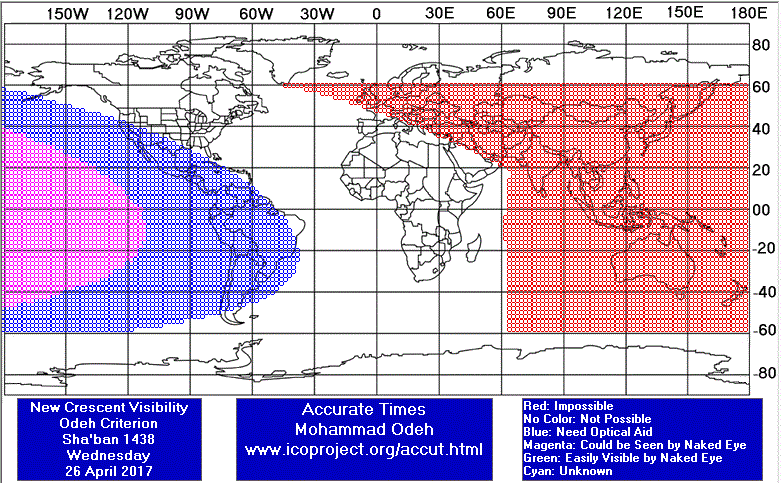
الخميس 27 إبريل/نيسان 2017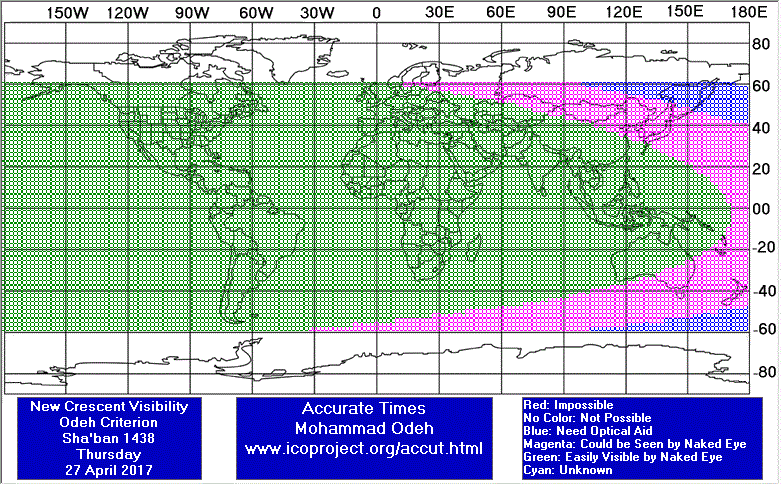
باعتماد التقويم الهجري العالمي المبني على حساب إمكانية رؤية الهلال، فإن بداية الشهر في النطاق الشرقي تكون يوم الجمعة 28 إبريل/نيسان 2017، وبداية الشهر في النطاق الغربي تكون يوم الخميس 27 إبريل/نيسان 2017. الرجاء ملاحظة أن التقويم الهجري العالمي يعتمد على الحسابات المسبقة (أي لا ينتظر الرصد العملي و رؤية الهلال) وهو يتبنى معياراً معينا لبدء الشهر الهجري الجديد. وقد تتبنى بلدك أو منظمتك معياراً آخر لبدء الشهر، لذا فإننا ننصح وبشدة أن يتم الاطلاع عما جاء في صفحة التقويم الهجري العالمي في موقعنا قبل إصدار أي أحكام .
ستضاف نتائج تحري الهلال وبداية الشهر الرسمية في مختلف الدول الإسلامية في هذه الصفحة إن شاء الله فور استلام نتائج الرصد من قبل أعضاء المشروع الإسلامي لرصد الأهلة.
نتائج تحري هلال أول الشهر (شعبان)
الأربعاء 26 أبريل 2017
المغرب
وقال عضو المشروع السيد وليد جعدار "اليوم هو ليس يوم التحرى في المملكة المغربية "
الولايات المتحدة
وقال عضو المشروع الدكتور جون كالدويل "Most of sky clear. Striated cloudiness along W horiz."
الخميس 27 أبريل 2017
أستراليا
المغرب
المملكة العربية السعودية
وقال عضو المشروع السيد تركي العمري "The sky condition was too bad after sunset despite of that we managed to see the new crescent by naked eye but we could not see the structure very well , at the beginning we used a binocular to determine the exact crescent "
المملكة المتحدة
وقال عضو المشروع المهندس قمر الدين "The Hilal of Shaban 1438 was sighted in the UK in many places, including at the York Astronomical Society Observatory by Qamar Uddin, Aqeal Peero, Yusuf Neto and two others at 20:51 hrs BST with 10x70 binoculars and 20:55 hrs BST by naked eye (through breaks in the clouds), Alhamdulillah. The photos below are cloudy before sunset, breaks in cloud after sunset and then out-pops the hilal for few seconds."
الولايات المتحدة
وقال عضو المشروع الدكتور جواد تورابنيجاد "I arrived at my sighting location (the Blacksburg Middle School) at 8:57 pm EDT (sunset: 8:07 pm). I started looking for the moon in a mostly cloudy western horizon. My first naked-eye sighting was at 9:03 pm when the moon appeared in a small clearing. I observed it for a short time before leaving the site prior to moonset (moonset: 9:39 pm). The crescent was easy to see with its horns at 2:00 and 7:00 O'clock (2:00;4:30;7:00)."
أندونيسيا
وقال عضو المشروع السيد سوجنج رياضي "I tried to observe the new crescent of Sha'ban 1438 AH on Thursday 27 April 2017 with my friends at Pangkalan Lada Kota Waringin Barat Central Borneo (The Kaukaba Team). The moon was not sighted because all sky was cloudy."
إيران
وقال عضو المشروع السيد حسين جانقربانی "Mr.Reza Janghorbani based in the city of Tabriz in East Azerbaijan province Moon Crescent At 20:12 is observed with the 15*70 binoculars and Moon Crescent At 20:20 is observed with the naked eye."
وقال عضو المشروع السيد حسين جانقربانی "In the name of God Happy new Years (Jalali Hosseini 14396 - In accordance with Serolaajaeb calendar, The Astronomy and Geophysics Center of Shahreza) Sha'ban Crescent Observation Report The Astronomy and Geophysics Center of Shahreza – The Crescent Association of Shahreza Report by: Hossein Janghorbani (Najmosepehr-Sadrolmonajjemin) – Manager of Shahreza Crescent Association and Red Crescent’s Astronomy and Geophysics Center Date: Thursday, 04/27/2017 Location: Mountain Shenly Dehaghan(Boodjan) in the Southwest of Shahreza (latitude: 31 50 N, longitude: 51 35 E, elevation: 2570m from sea level, time zone: +4.5 GMT) Equipments: One sets of 15*70 binoculars, One sets of 20*90 binoculars, One sets of 7*50 binoculars, One compass. Atmospheric condition: partly cloudy in western horizon. Horizon obstacles: 2/5° Apparent sunset: ..:.. Results: Moon crescent was not seen. Observers: 1- Zohreh Karimpoor 2- Narges Shahnazari 3- Azam Erfan 4- Sakineh Moosavi 5- Toktam Aliabedi 6- Soheyla Eslami 7- Shiva Ansaripoor 8- Masoomeh Hafar 9- Ziba Hafar 10- Dr Ali Akbar Taki 11- Mohammad Javad Nikeghbal 12- Azam Shojaee 13- Shahideh Torabi 14- Alireza Torabi 15- Saer Aliabedi 16- Mahdi Ghasemi 17- Hossein Janghorbani 18- Ali Janghorbani 19- Zahra Fallahi 20- Parvin Rezaee 21- Mohammad Sadra Nikeghbal 22- Mohammad Javad Hafar 23- Maryam Nazem 24- Elaheh Khodadipoor 25- Pooya Hafar 26- Faezeh Nazem 27- Abdolreza Gholami 28- Shahriar Gholami 29- Talaat Taheri 30- Tayebeh Shafiee 31- Behnaz maarefvand 32- Zohreh Salek 33.Reyhaneh Dadvand "
بنغلادش
وقال عضو المشروع السيد أبم حسان "Eventually we have seen the Shaban crescent in the northern part of the country,Thakurgoan. Our best time calculation was 6:51 minute (Dhaka Time). After adding + 13 minute (Thakurgoan time difference) we have got information and verified around 7:15. We are very lucky today. Islamic Foundation declared the date based on our sighting report."
جنوب أفريقيا
وقال عضو المشروع الدكتور عبد العزيز إبراهيم "1438 H Shabaan Hilaal seen by naked eye in many parts of Southern Africa. The 1st of Shabaan will correspond to Friday, 28 April 2017."
سريلانكا
وقال عضو المشروع السيد عبد الرحمن رزين "Aalaikum. Today 27-04-2017CE=29-07-1438AH is the sighting day for the month of Shaban 1438AH in Srilanka. I was in Colombo Grand Mosque.The sky was partly cloudy in Colombo. The parameters are Sun set:6:19pm. Moon set:7:20pm. Lag=61minutes The prediction of the astronomers=Crescent can be sighted easily. Hilaal sighting groups was arranged right round the country. Positive sighting reports was recieved to CGM Hilaal Committee from west coast of Srilanka first from Puttalam at 6:40pm and then from Jaffna,Bambalapitiya and Galle. The orientation was 3-7 o'clock. Hence it was decided at the Hilaal Committee conference at CGM which was presided by the CGMH Committee president Moulana Riyadh (Baari) along with ACJU and MRCA to complete the proceeding month as 29 days and start the month of Shaban on 28-4-2017CE."
عُمان
وقال عضو المشروع الأستاذ دكتور محمد سالم البوسعيدي "الجو مغبر قليل وتمت رؤية الهلال بالمنظار وبالكاميرا "
وقال عضو المشروع السيد فهد سالم بيت فاضل "تمت الرؤية بحمد الله تعالى من قبل الفريق الميداني لتحري الأهلة بمحافظة ظفار ، كما أن الهلال رؤي بالعين المجردة بسهولة من فوق الجبال بشهادة بعض سكان المناطق الجبلية نظرا لطول مكثه وارتفاعه."
ماليزيا
بداية الشهر الرسمية
الخميس 27 أبريل 2017
1 . البحرين
2 . الكويت
3 . قطر
الجمعة 28 أبريل 2017
1 . أستراليا
2 . الأردن
3 . الإمارات
4 . الجزائر
5 . المغرب
6 . المملكة العربية السعودية
7 . أندونيسيا
8 . إيران
9 . باكستان
10 . بنغلادش
11 . تونس
12 . سريلانكا
13 . سوريا
14 . عُمان
15 . فلسطين
16 . ليبيا
17 . ماليزيا
18 . مصر
توقع رؤية هلال آخر الشهر (رجب)
سيحدث الاقتران المركزي (المحاق المركزي) يوم الأربعاء 26 إبريل/نيسان 2017 الساعة 12:16 بالتوقيت العالمي بمشيئة الله.
إمكانية رؤية هلال آخر الشهر يوم الأربعاء 26 إبريل/نيسان 2017 ويوم الثلاثاء 25 إبريل/نيسان 2017 موضحة في الأشكال التالية باستخدام برنامج المواقيت الدقيقة باعتماد معيار عودة، بحيث:-
- رؤية الهلال مستحيلة من المناطق الواقعة في اللون الأحمر بسبب شروق القمر بعد شروق الشمس أو/و بسبب حصول الاقتران السطحي قبل شروق الشمس.
- رؤية الهلال ممكنة باستخدام التلسكوب فقط من المناطق الواقعة في اللون الأزرق.
- رؤية الهلال ممكنة باستخدام التلسكوب من المناطق الواقعة في اللون الزهري، ومن الممكن رؤية الهلال بالعين المجردة في حالة صفاء الغلاف الجوي التام والرصد من قبل راصد متمرس.
- رؤية الهلال ممكنة بالعين المجردة من المناطق الواقعة في اللون الأخضر.
- رؤية الهلال غير ممكنة بالعين المجردة أو بالتلسكوب من المناطق غير الملونة، على الرغم من شروق القمر قبل شروق الشمس ومن حصول الاقتران السطحي بعد شروق الشمس، وذلك بسبب قلة إضاءة الهلال و/أو بسبب قربه من الأفق.
- يرجى ملاحظة أن الأشكال أدناه تبين إمكانية رؤية الهلال في المناطق الواقعة بين خطي عرض 60 شمالا و60 جنوبا.
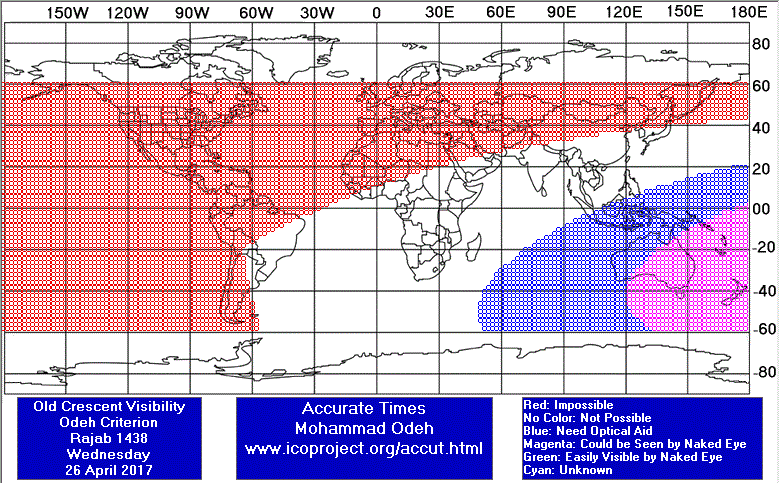
الثلاثاء 25 إبريل/نيسان 2017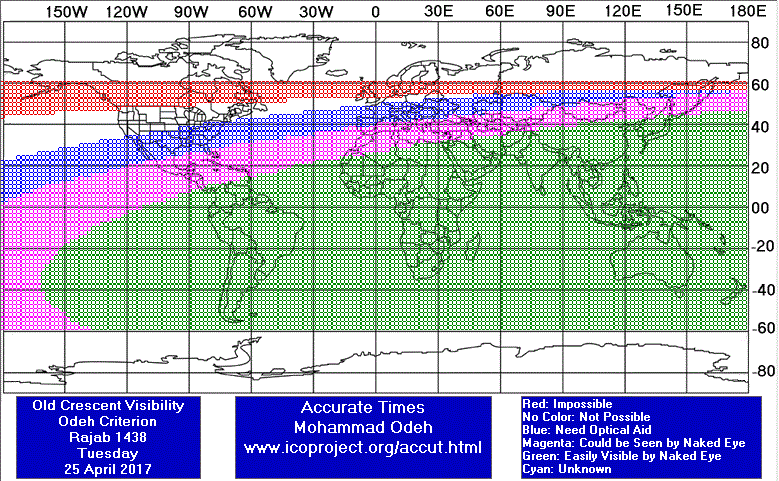
نتائج تحري هلال آخر الشهر (رجب)
الثلاثاء 25 أبريل 2017
المملكة العربية السعودية
وقال عضو المشروع الدكتور ايوب علي باتيل "Although partly cloudy easter horizon but the old waning crescent moon for Rajab 1438 was seen by naked eye and by binoculars for about 15 minutes before sunrise. The Ummul Quraa calendar date is 28th Rajab 1438. Clearly it is a day ahead of the regional visibility calendar. for this month of Rajab."
أندونيسيا
وقال عضو المشروع السيد سوجنج رياضي "The waning crescent of Rajab 1438 H was not seen on Tuesday 25 April 2017 from Rowasiya Observatory at Bendo Ketitang Juwiring Klaten Central Java Indonesia. The east horizon was cloudy."
